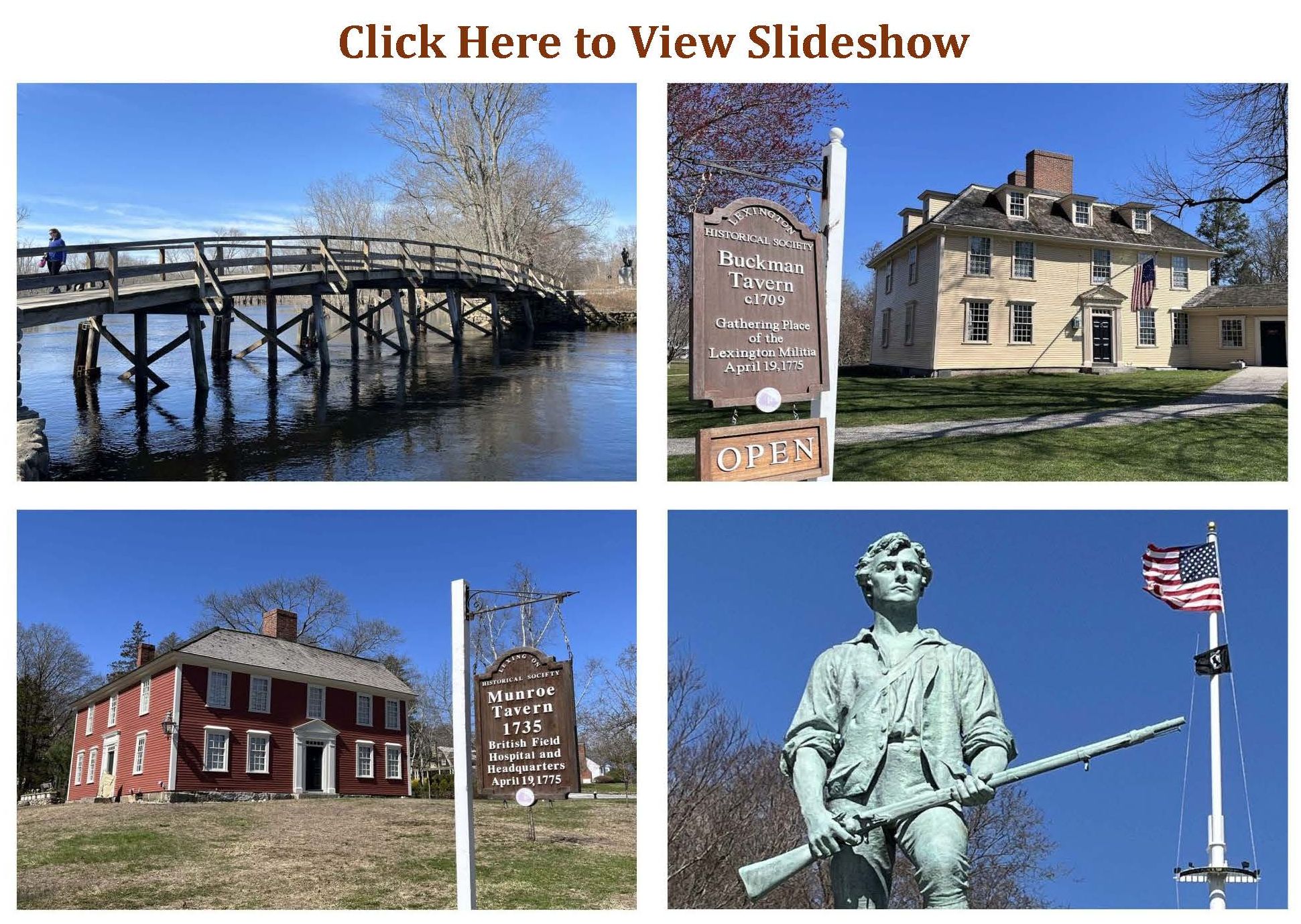
Editor's Note: One of the most respected American historians, Davie Hackett Fischer

Editor's Note: One of the most respected American historians, Davie Hackett Fischer
America's 250th Anniversary starts this month at Lexington and Concord. In case you can't travel there for the commemorations, we have photographed some of the significant sites you can see.
The events on April 19, 1775 were internationally significant. But they were also a very local experience for the residents of the area. Their fathers and sons died defending their homes and their liberty, houses were burned, property taken.
So from the beginning many of these sites were seen as sacred. The first marker
America's 250th Anniversary starts in earnest this month. There will be many events in Concord, Lexington, and the Minute Man National Historical Park.
In case you can't travel there for the commemorations, we have photographed twenty of our favorite places.

It was planned as a simple expedition to Concord “to arrest and imprison the principal actors & abettors in the Provincial Congress.” But the raid became a day-long running battle as nearly four thousand colonial troops from across eastern Massachusetts confronted 1,700 Royal infantry and marines retreating back to Boston.
What transpired in the town of Menotomy along the way shocked participants on both sides of the fighting. Today the name of Menotomy is little remembered outside of its location in Arlington, Massachusetts. It appears as a footnote, if cited at all, in standard histories of the American Revolution. Most modern studies focus on the outbreak of the war itself and give it just a few paragraphs. There isn’t a Menotomy town green or common to visit today; technically, Menotomy’s common was four miles to the east, in the heart of its mother town of Cambridge.
Editor’s Note: One of the leading historians of the American Revolution and founding era, John Ferling is a professor emeritus at the University of West Georgia and the author of two dozen books. His most recent is a major, global reappraisal of the Revolutionary War on its 250th Anniversary, Shots Heard Round the World: America, Britain, and Europe in the Revolutionary War, from which portions of this essay were adapted.
America’s Revolutionary War might have been avoided, but it wasn’t, and the American insurgency might have been crushed within a year or so of fighting, but it wasn’t. What began as a civil war within the British Empire continued until it became a wider conflict involving nations in Europe and affecting peoples and countries far from Great Britain and North America. Long after the soldiers laid down their arms, future generations in America and in distant corners of the world were touched—sometimes favorably, sometimes adversely—by the American Revolution and the fallout from its war.
I could scarcely believe what I was seeing. Despite generations of research and hundreds of books on the American Revolution, here was a critically important, yet previously undocumented treasure – a detailed map of the retreat of British troops from Lexington drawn by Lord Hugh Percy himself, the general who commanded those regiments.
